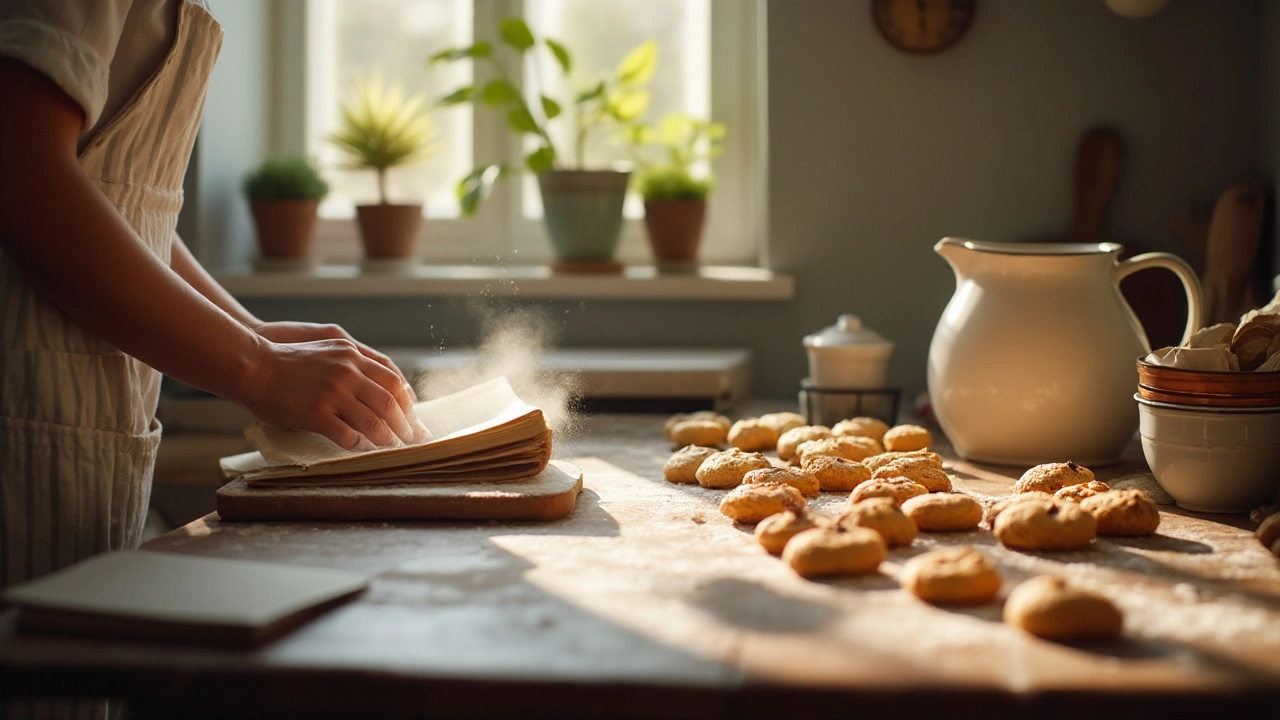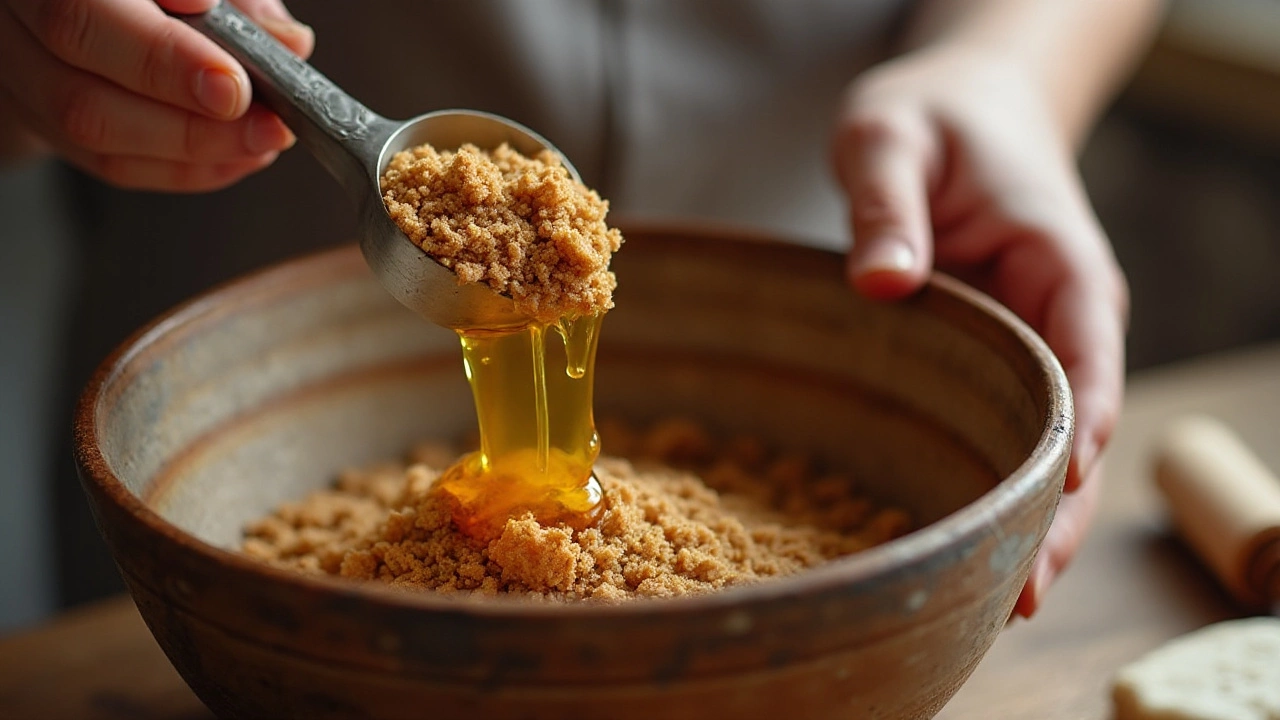
Nothing beats the delightful sensation of sinking your teeth into a perfectly chewy cookie. While crispy cookies have their charm, there's something truly satisfying about a soft and chewy texture that melts in your mouth. If you've been wondering how to shift your cookie baking game from crunchy to chewy, you're in the right place.
Understanding the science behind cookie dough and selecting the right ingredients is crucial in achieving that ideal chewiness. From the proportion of sugar to the type of fat you use, each element plays a significant role. With a few adjustments and techniques, you can transform your cookies without losing their flavor or integrity.
Join us as we delve into the fascinating world of cookie baking, where we unveil tips and hacks to make your cookies irresistibly chewy. Explore the art of baking from a fresh perspective, and unlock the secrets that will make your homemade cookies the star of any cookie jar.
- The Science of Cookie Dough
- Choosing the Right Ingredients
- Baking Techniques for Chewiness
- Adjusting Sugar and Fat
- Storage for Softness
The Science of Cookie Dough
Baking cookies, especially striving for that perfectly chewy cookie, is a delightful culinary art grounded in science. A well-balanced cookie dough heralds the difference between a cookie that is soft and chewy versus one that is hard and crunchy. To start, understanding the basis of cookie dough composition is critical. Flour, sugar, and fat are the foundational elements that orchestrate the final texture of your homemade cookie. Flour provides structure; it’s the protein content in flour that forms gluten, giving the dough its elasticity. In cookies, too much gluten can turn the desired chewiness into toughness, which leads bakers to choose all-purpose flour carefully.
When it comes to sugars, the choice can significantly affect texture. White sugar and brown sugar, often used in tandem, have distinct roles. White sugar increases spread, resulting in a thinner, crispier cookie, whereas brown sugar promotes moistness and a softer chew thanks to its molasses content. It's about achieving the right balance; typically, using more brown sugar than white yields a chewier cookie. Fats, usually in the form of butter or shortening, also hinge on preference and desired outcomes. Butter infuses flavor and helps in browning due to its low melting point, thus amplifying chewiness. Conversely, shortening doesn't melt as rapidly, preventing spread and often resulting in a puffier, less flavorful cookie.
Precision in Ingredients
Another critical component is the precision and accuracy of measurements. An improperly measured cup of flour or excess sugar can alter the consistency of the dough profoundly. For instance, many seasoned bakers use weight measurements instead of cups for accuracy. Did you know that one cup of flour weighed improperly could result in up to 30 grams of variance? This difference can significantly influence the outcome, transforming a desired chewy texture into a brittle one. An ideal cookie dough should be slightly tacky to touch and not overly sticky. It’s the hydration levels that inspire this texture, a subtle balance achieved by the liquid content from eggs.
Eggs are intriguing components. While whole eggs deliver cohesive binding alongside added moisture critical for chewiness, egg yolks alone bring indulgent fat without excess liquid, contributing to a richer, tender cookie crumb. The perfect cookie dough also relates to the chilling time; giving dough a resting period in the refrigerator can enhance flavors and texture by allowing the flour to fully hydrate. "Good things come to those who wait," said pastry chef and cookie enthusiast Stella Parks in her acclaimed book, signifying the importance of rest in cookie dough preparation.
Every variable of your dough, from temperature to ingredient choice, contributes dynamically. Creating consistency in your cookie tips involves not just following recipes to the letter, but also experimenting with these elements until the desired taste and texture are achieved. The genuine pleasure lies in the journey of discovering these secrets within your kitchen laboratory.
Choosing the Right Ingredients
The journey to chewy cookies begins at the base of your ingredient list. To achieve those soft, melt-in-your-mouth delights, the type of flour, sugar, and fat you choose plays a crucial role. Not all flour types are created equal when it comes to contributing to a cookie's texture. All-purpose flour is a favorite among bakers due to its moderate protein content, which strikes a balance between tenderness and chewiness. Using bread flour, on the other hand, which is higher in protein, can actually contribute to a chewier texture as it promotes gluten development. Thus, combining these flours or experimenting with proportions might just be the secret you've been missing.
When it comes to sugar, the right balance can make a significant difference. Brown sugar is a favorite in achieving chewy cookies because it's naturally moist. The molasses content in brown sugar not only helps retain moisture but also contributes a rich, deep flavor that enhances the cookie's taste. While using a mix of brown and white sugar can provide the best of both worlds, leaning more towards brown sugar is advisable if chewiness is your goal. The way sugar interacts with fats, particularly butter, plays a major role as well. Creaming these two elements together is essential in creating a smooth and velvety foundation for your dough.
Speaking of fats, butter is, without a doubt, the champion in cookie baking. However, the way it's treated can greatly affect the final product. Softened, but not overly melted butter, allows for proper emulsification during the creaming process, while melted butter can lead to denser cookies due to the reduction in air bubbles. Interestingly, some bakers have found success in adding a small quantity of shortening to their recipe, wagering its neutral flavor and texture-enhancing properties for that edge of chewiness. Renowned baker Joanne Chang once articulated,
"The real key to the perfect cookie is understanding how each ingredient influences texture and flavor. It's the little adjustments in your basic recipe that can yield the most comforting results."
Don't overlook eggs, the unsung heroes of baking. Eggs add structure, leavening, and richness. If chewiness is your desired outcome, adding an extra egg yolk can offer the richness needed to combat dryness. This little tweak, along with chilling the dough before baking, creates an opportunity for the ingredients to bind cohesively, modifying the gluten structure for a chewier texture. In essence, understanding your ingredients from the standpoint of their chemical properties and how they interact with each other is essential in baking your perfect batch of homemade cookies. Like an artist with their palette, using the right brushes of ingredient types and the stroke of preparation can create the chewy masterpiece you've been yearning for.

Baking Techniques for Chewiness
When you’re aiming for that perfect chewy cookie, the process goes beyond just mixing ingredients. The way you approach the actual baking can have a huge impact on the final texture. One essential technique is to ensure that you don't overbake your cookies. It might seem counterintuitive, but when they appear slightly underdone as you take them out of the oven, they’re often perfect. As the cookies cool on the baking sheet, they continue to cook, solidifying into chewy rather than crunchy treats. This is a moment when having a baker’s instinct truly pays off. Pay close attention to your oven's behavior, as the actual temperature can sometimes differ from the dial setting.
Another important technique involves chilling your cookie dough before baking. Allowing the dough to rest in the refrigerator for at least an hour, if not overnight, has substantial benefits. During this time, the moisture within the dough coats the flour particles, leading to enhanced flavors when the cookies are baked. A chilled dough also results in a thicker cookie, allowing for that sought-after chewiness that many cookie enthusiasts adore. Many expert bakers, such as those we've come to admire over the years, swear by this practice because of the profound taste and texture it imparts.
Paying attention to the type of baking sheet used can also make a difference. Opt for thicker, heavier-duty sheets, which help distribute heat more evenly. This ensures that cookies bake uniformly, preventing edges from becoming too crisp while the centers remain just right. Using parchment paper or silicone mats on your sheets is recommended, as this can prevent overspreading. Speaking of spreading, the spacing of dough balls on your sheet affects baking success; too close, and you might end up with a mega cookie, whereas appropriate spacing allows each to maintain its structure and texture.
Timing is everything in the realm of cookie baking. Whether you have the opportunity to bake in a conventional oven or are making do with a convection model, understanding how these nuances affect your bake can mean the difference between success and underwhelming results. Is your heart set on the effect that convection creates? Remember convection settings might bake slightly faster, so adjust your time accordingly. Keeping track of times for your setup can build that necessary cushion of experience. As you gain more experience, and your instincts sharpen—sample a batch or two for purely professional reasons—it’s easy to anticipate how your cookies will react to your method.
In all endeavors, especially when striving for perfect homemade cookies, trial and error become your trusted partners. Even professionals learn something new each bake. Thomas often muses on how our kitchen woes have led to some unexpected yet successful variations. It's a journey as much as it is a recipe, one where each bake brings its unique flair and a new lesson to savor—literally and metaphorically.
Adjusting Sugar and Fat
When it comes to crafting the perfect chewy cookies, the balance of sugar and fat is an intricate dance that can turn a recipe from a crunchfest to a chewy masterpiece. At the heart of this transformation lies the type and amount of sugar you choose. Brown sugar, with its molasses content, is a key player in creating more moisture and tenderness in cookies. Its hygroscopic nature means it attracts and retains moisture, which is excellent for achieving that soft chewiness we adore. On the other hand, white sugar contributes to spreading, which can make cookies thin and crispy. By adjusting the ratio, or even opting for all brown sugar, you can significantly increase the chew factor.
Fat, particularly butter, plays a crucial role in cookie texture as well. While butter is a staple in many classic cookie recipes, it's worth noting that its water content can influence the final product. Switching some butter for vegetable shortening or combining the two can yield softer cookies due to the higher fat content in shortening, which has no water. This alteration can lead to less gluten formation, ensuring a more tender crumb. Notably, melting the butter before mixing with sugar can also give those desired chewy results by making the dough more cohesive.
The temperature of ingredients impacts outcomes as well. Cold butter creates thicker cookies whereas room temperature butter aids spread and can result in softer edges but a chewy center. To truly understand these dynamics, Harold McGee, the food science guru, emphasizes experimentation. As he mentions in his seminal work "On Food and Cooking," the chemistry of baking is as much about practice as it is science.
"The baker who understands the function of each ingredient can come up with endless variations," McGee states, encouraging home bakers to explore their own preferences with trial and error.Exploring the fascinating world of fats, from experimenting with browned butter for a nutty undertone to trying vegan substitutes like coconut oil, unveils a myriad of textures and flavors that can be tailored to your family’s preferences.
In the realm of sugar, liquid sugars such as honey or maple syrup bring their unique flavors and levels of moisture. Altering the sugar not only affects chewiness but also influences sweetness and caramelization, adding depth and character to your homemade cookies. The effects of sugar can be tracked with time-tested baking techniques, and sometimes, it's beneficial to document your experiments. Using a baking journal can provide insight into oven times, ingredient choices, and unexpected outcomes, offering valuable lessons that improve cookie-making skills with each batch.
Lastly, let's not forget about the intriguing world of fats beyond traditional dairy. Nuts like almonds offer not just additional flavor but can be ground into flour or pressed into oils for an aromatic twist. Incorporating nuts or nut butters can add both chew and complexity to cookies, challenging your baking repertoire and creating more memorable confections. As you tweak your recipes, remember that the journey to the ultimate chewy cookies lies in these delicate yet impactful adjustments to sugar and fat. The magic happens when your personal touch harmonizes with scientific understanding, resulting in scrumptious, chewy cookies that friends and family will savor.
| Fat Type | Effect on Cookies |
|---|---|
| Butter | Makes cookies crispy with a rich flavor |
| Vegetable Shortening | Yields softer cookies with a tender crumb |

Storage for Softness
Preserving the chewiness of your homemade cookies isn't just about the way you bake them but also how you store them. Once you've achieved that perfect texture, ensuring they remain soft requires attention to detail. A common mistake is leaving cookies exposed to air, leading to moisture evaporation, which can cause them to become tough and dry. Proper storage involves sealing in moisture while protecting the cookies from the elements that may sap away their softness.
For optimal storage, use airtight containers. This can be plastic containers with tight-fitting lids or even glass jars with rubber seals. It's important to layer the cookies with parchment paper or wax paper, especially if you’re stacking different types or flavors, to prevent sticking and flavor transfer. Not only does this help keep the cookies soft, but it also maintains their distinct tastes. Remember, delicate cookies like chocolate chip may require a tender touch, so avoid packing them too tightly.
Consider incorporating a slice of bread in the container with your cookies. This ingenious trick acts as a moisture magnet. The bread will likely harden over time as it imparts its humidity to the cookies, keeping them soft and chewy longer. Just make sure to replace the bread slice after a couple of days to maintain effectiveness. According to a survey by the Cookie Bakers Association, a majority of seasoned bakers swear by this method for retaining freshness.
Temperature also plays a vital role in cookie storage. While some recommend refrigeration, especially for cookies containing dairy, it can adversely affect texture for many types. Cold temperatures can cause a cookie's butter to harden, leading to a denser texture. Instead, store your creations at room temperature, away from direct sunlight and heat sources. If you need to keep them fresh for an extended period, freezing is a better alternative. Wrap each cookie individually in plastic wrap and then place them in a freezer-safe zip-lock bag.
When you’re ready to enjoy them, simply thaw them at room temperature for about 15 minutes, or pop them in the microwave for a few seconds to regain a freshly-baked effect. Some bakers even suggest refreshing your cookies with a quick oven warm-up. Preheat the oven to about 300°F and warm the cookies for 3-5 minutes. This technique allows the fats and sugars to re-melt and soften, creating that delightful chewiness once again.
Maintaining moisture is key to prolonging the life of your chewy cookies. Whether you choose a classic cookie jar or a more modern airtight solution, the goal is to lock in that beloved softness. Remember, the real magic happens with attention to these little details, ensuring your cookies deliver joy bite after chewy bite.